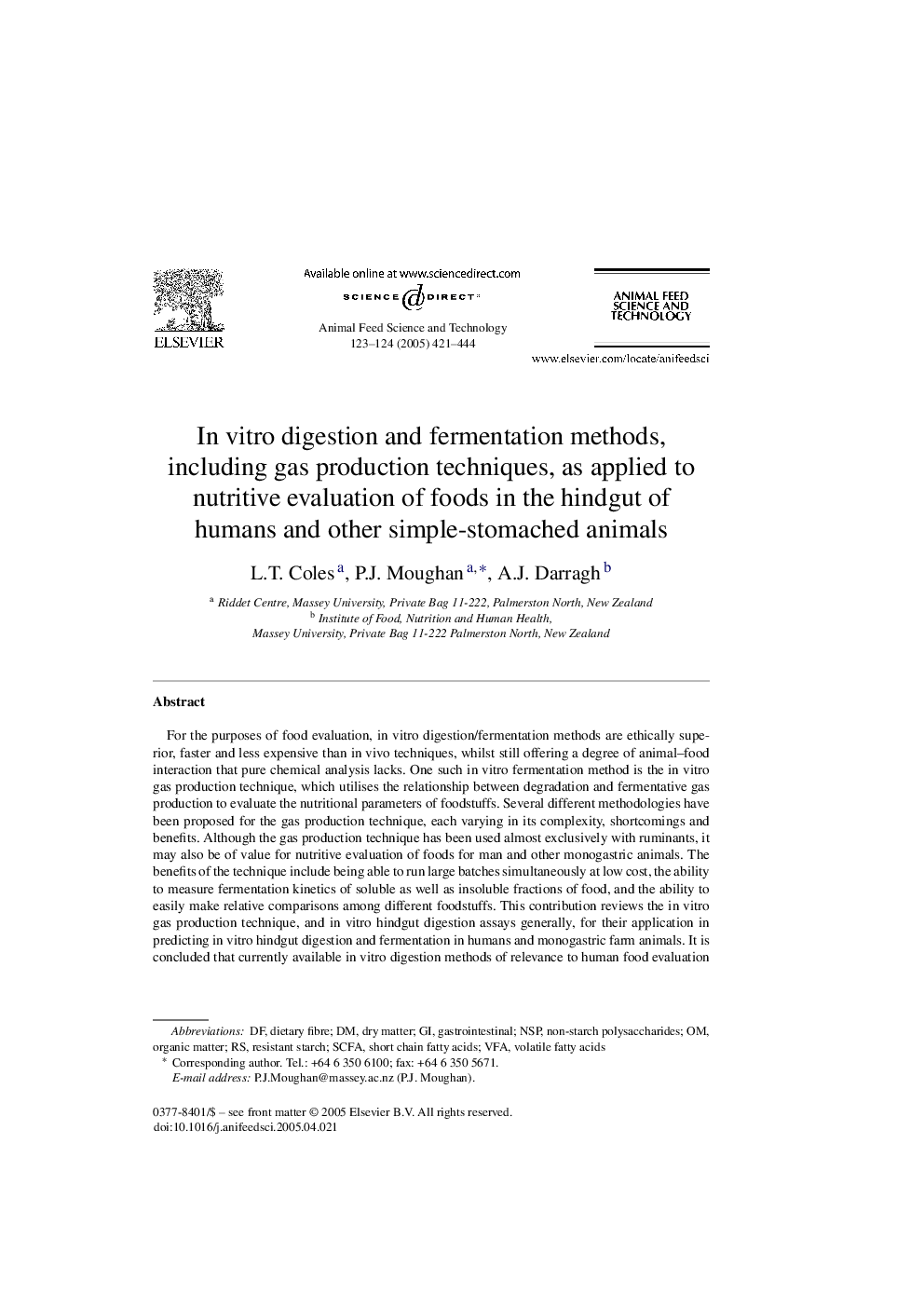| Article ID | Journal | Published Year | Pages | File Type |
|---|---|---|---|---|
| 9916628 | Animal Feed Science and Technology | 2005 | 24 Pages |
Abstract
For the purposes of food evaluation, in vitro digestion/fermentation methods are ethically superior, faster and less expensive than in vivo techniques, whilst still offering a degree of animal-food interaction that pure chemical analysis lacks. One such in vitro fermentation method is the in vitro gas production technique, which utilises the relationship between degradation and fermentative gas production to evaluate the nutritional parameters of foodstuffs. Several different methodologies have been proposed for the gas production technique, each varying in its complexity, shortcomings and benefits. Although the gas production technique has been used almost exclusively with ruminants, it may also be of value for nutritive evaluation of foods for man and other monogastric animals. The benefits of the technique include being able to run large batches simultaneously at low cost, the ability to measure fermentation kinetics of soluble as well as insoluble fractions of food, and the ability to easily make relative comparisons among different foodstuffs. This contribution reviews the in vitro gas production technique, and in vitro hindgut digestion assays generally, for their application in predicting in vitro hindgut digestion and fermentation in humans and monogastric farm animals. It is concluded that currently available in vitro digestion methods of relevance to human food evaluation lack standardisation, in vivo validation and justification to support their specific methodology, and have not been tested with a wide range of fermentative substrates.
Keywords
Related Topics
Life Sciences
Agricultural and Biological Sciences
Animal Science and Zoology
Authors
L.T. Coles, P.J. Moughan, A.J. Darragh,
